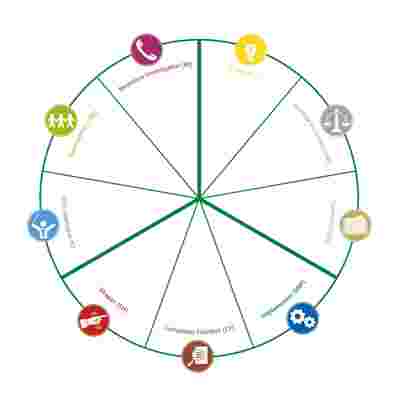Designing a Team
Teams - management teams, senior leadership teams or any other team - are commonly made up of members holding particular appointments. They are there by virtue of the offices or responsibilities they represent.
No overall sense of design governs the composition of the group which, in human terms, is little more than a random collection of professionals with as wide a spread of human foibles and personality characteristics as one might expect to find in the population at large.
However, we know that the compatibility of members of the team is crucial to its effectiveness. It is a subject of no less importance than whether members of a team are talented as accountants, production engineers, or salespeople.
The problem is that human compatibility is more difficult to assess than technical competence.
Our research has given leads on how the subject of compatibility within the team might be approached.
To guide us in our work of team design, four interlocking principles can be set out:


